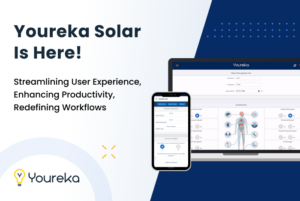
Balancing complexity and simplicity to deliver comprehensive wellness
Balancing complexity and simplicity is crucial for delivering comprehensive wellness in healthcare. Achieving this balance involves shifting from isolated issues to an integrated model with rich healthcare consumer profiles.
However, achieving complexity and simplicity together, in the same solution, is doubly challenging. There is, however, a clear way forward.
The demands of diagnosis and the need for complexity
Complexity is essential because without robust, specific, and relevant data, you can’t diagnose accurately. That requires a sophisticated infrastructure which can be readily accessed.
Such a system starts with a comprehensive, medically accurate medical database. Because medicine is always evolving, there must be a mechanism for constantly refreshing and refining this data.
But that really is just the start. To realize the promise of healthcare, you need to bring the system to every individual interaction. This means creating and updating complex assessments for a specific patient. It means integrating traditional POC records, clinician field assessments, self-assessments, and even first responder intake information and incorporating both written and visual data. And, again, these assessments must be able to provide continuity of care for each patient, both over time and between providers.
Of course, all of this must be done while maintaining strict compliance with relevant regulations, especially HIPAA.
The four requirements of complexity
Comprehensive, medically accurate database
Sophisticated and dynamic patient assessments
Continuity of care across the care team
HIPAA compliant
The Demands of use and the need for simplicity
Simplicity is important because if we are to help more people, we must reach more people. We need to make healthcare portable. And that means creating an extraordinary user experience for clinicians who have limited time and, in some cases, no access to wifi. Those clinicians will have varying levels of training, certification, and experience. They also understandably want to keep the personal touch—focusing on their conversation with the member, not their interaction with the device. Software featuring automation and optimized interface design means clinicians spend more time talking with people and less time manipulating screens. With this in mind, any solution will energetically pursue opportunities for automation, to eliminate unnecessary steps. It will prioritize interface design, to eliminate confusion, hesitation, missteps, and frustration—and to create a positive feeling of competency and progress. The interaction should feel elegant.
Decision support, informed by best practices, will standardize care, helping to account for differences in clinician experience.
When protocols are distinctive to your organization, you should be able to update them with no or little coding.
The ideal interface will leverage AI to efficiently channel information to users and adapt to particular situations.
It will refresh the larger database and contribute to quality and continuity of care by enabling the user to easily capture significant information.
Finally, to be truly portable, any solution must be able to function offline. This means full functionality and recent, if not real-time, data will be available. Those with the weakest digital connection often need our help the most. At the same time, when the device is back online, it should automatically perform any updates and information exchanges.
The eight requirements of simplicity
Retains personal touch
Automates to eliminate steps
Optimizes interface design to eliminate confusion
Provides decision support
Minimizes or eliminates coding to customize the interface
Leverages AI to augment care
Captures relevant information
Functions offline, and updates real-time when online
Complexity and simplicity are not easily achieved. But we can achieve them. Want to further explore how we might break down the barriers to comprehensive wellness?
Our Co-founder and Chief Product Officer, Dan Bergner, and SVP, Synaptic Advisor, Tony McCune recently shared their insights into simple and innovative practices that can revolutionize our industry. Discover how healthcare organizations can stay connected and gain a comprehensive view of their member’s wellness, leading to improved health outcomes.




